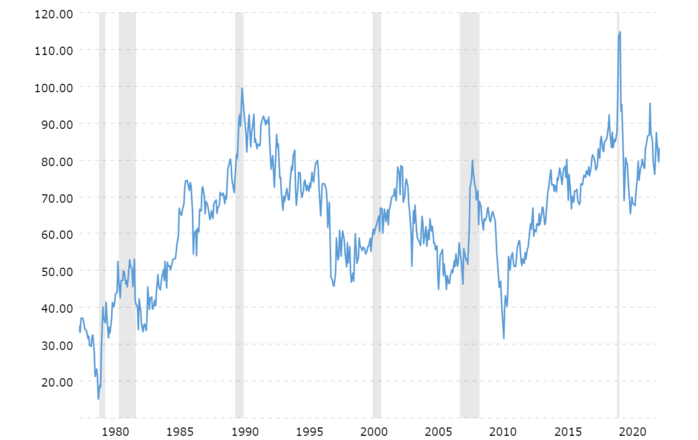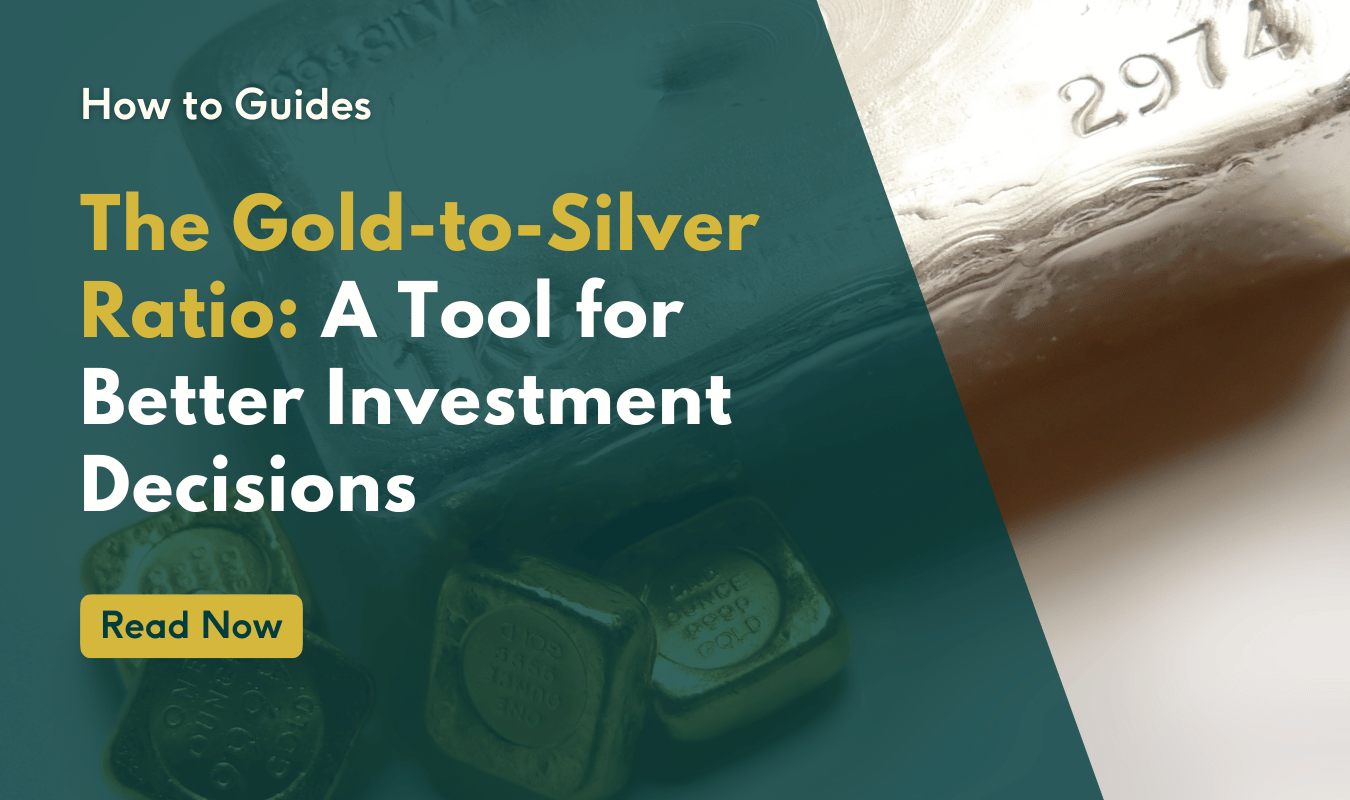The Gold-to-Silver Ratio: A Tool for Better Investment Decisions
Investing in precious metals has long been a popular strategy for individuals seeking to diversify their portfolios and protect their wealth. Among the various precious metals, gold and silver have traditionally garnered significant attention from investors. However, understanding how to effectively evaluate and compare the two can be challenging. This is where the gold-to-silver ratio comes into play. In this article, we will explore how the gold-to-silver ratio can be used as a valuable tool for making better investment decisions.
Understanding the Gold-to-Silver Ratio
The gold-to-silver ratio is a simple but powerful metric used to determine the relative value of gold to silver. It is calculated by dividing the price of gold per ounce by the price of silver per ounce. For instance, if the ratio stands at 80, it means that it takes 80 ounces of silver to purchase one ounce of gold.
Historically, the ratio has shown significant variations. It has ranged from as low as 15 during periods of economic prosperity to as high as 100 during times of financial uncertainty. Understanding these historical trends and patterns is crucial for interpreting the ratio and making informed investment decisions.
Several factors influence the gold-to-silver ratio. Supply and demand dynamics, global economic conditions, geopolitical factors, and industrial usage of silver all contribute to the ratio's fluctuations. Additionally, market sentiment and investor behaviour can also play a role in determining the ratio.
The Significance of the Gold-to-Silver Ratio in Investment Decisions
Relationship between the ratio and market sentiment
The gold-to-silver ratio is often influenced by market sentiment. During periods of economic uncertainty or financial market stress, investors tend to flock to the perceived safety of gold, causing the ratio to increase. Conversely, in times of economic growth and stability, silver may outperform gold, resulting in a decrease in the ratio. By monitoring the ratio, investors can gain insights into market sentiment and adjust their investment strategies accordingly.
The relationship between the two is noted during the COVID-19 pandemic, which led to a decline in demand for silver. Silver is an industrial metal that is used in a variety of products, including electronics, solar panels, and medical devices. As a result of the recession, demand for these products declined, which led to a decline in demand for silver.
In contrast, gold is seen as a safe haven asset, which means that it is often bought during times of economic uncertainty. As the COVID-19 pandemic unfolded, investors began to buy gold to protect their wealth. This increased demand for gold led to an increase in its price.
Use of the ratio as a contrarian indicator
The gold-to-silver ratio can also be used as a contrarian indicator. When the ratio reaches extreme levels, it may suggest an overvaluation or undervaluation of one metal relative to the other. In such cases, contrarian investors may consider rebalancing their portfolios by either selling the relatively expensive metal or buying the relatively cheaper one, expecting the ratio to revert to its mean.
Here are some real historical examples and statistics that show how the gold-to-silver ratio has been used to make investment decisions:
- In the 1970s, the gold-to-silver ratio reached a high of 100:1. This was during a time of high inflation and economic uncertainty. Investors were looking for a safe haven asset, and gold was seen as a better investment than silver.
- In the 1980s, the gold-to-silver ratio fell to a low of 15:1. This was during a time of economic growth and stability. Investors were more interested in investing in assets that would grow in value, and silver was seen as a better investment than gold.
- In the 2000s, the gold-to-silver ratio rose to a high of 80:1. This was during a time of the dot-com bubble and the 9/11 terrorist attacks. Investors were looking for a safe haven asset, and gold was seen as a better investment than silver.
- In the 2010s, the gold-to-silver ratio has been trending lower. This is likely due to several factors, including the economic recovery from the Great Recession, the rise of central bank quantitative easing, and the increasing use of silver in renewable energy technologies.

Source: macrotrends.net
Image Depiction: The image depicts the gold-to-silver ratio over 40 years. The grey bars indicate the periods of economic recession and the impact around this time.
Applying the Gold-to-Silver Ratio in Investment Strategies
Identifying favourable investment opportunities
By analysing the gold-to-silver ratio, investors can identify potential buying or selling opportunities. When the ratio is relatively high, it may indicate that silver is undervalued compared to gold, presenting a buying opportunity for silver. Conversely, a low ratio may suggest that gold is relatively cheaper, making it an attractive investment option.
Example:
Here is an example of how an investor might use the gold-silver ratio to make an investment decision.
In 2008, the gold-silver ratio was around 80:1. This means that it took about 80 ounces of silver to buy one ounce of gold. This was a relatively high gold-silver ratio, which suggests that gold was overvalued, and silver was undervalued.
An investor who believed that the gold-silver ratio was out of whack might have decided to sell gold and buy silver. If they had done so, they would have made a profit when the gold-silver ratio declined to around 45:1 in the middle of 2011.
Portfolio allocation and diversification
The gold-to-silver ratio can guide investors in determining the optimal allocation of gold and silver within their portfolios. A higher ratio may suggest a greater allocation to silver, while a lower ratio may warrant a higher allocation to gold. By diversifying their precious metal holdings based on the ratio, investors can potentially mitigate risk and maximise returns.
The tool can also support investors in hedging their portfolios against volatility. The distribution of the gold-to-silver ratio can guide investors on the portfolio allocation towards gold and silver. In this instance, an investor would take a long, short or neutral position towards their distribution of metals in their allocation and can subsequently adjust their position accordingly to maximise their return.
For example, if the ratio is high, it may be a sign that investors are worried about the economy and are looking for a safe haven asset. In this case, investors may want to consider taking a long position and distributing a greater allocation of gold within their portfolio.
Timing the market using the ratio
Timing the market is notoriously difficult, but the gold-to-silver ratio can provide valuable insights. When the ratio is at extreme levels, it may indicate a potential turning point in the market. Investors can use this information to adjust their positions or consider entering or exiting the market altogether.
Combining the ratio with other indicators and analysis tools
To enhance the effectiveness of the gold-to-silver ratio, investors can combine it with other indicators and analysis tools. Technical analysis, such as chart patterns, trend lines, and moving averages, can provide additional confirmation or signals for investment decisions. Fundamental analysis, including macroeconomic factors and supply-demand dynamics, can also complement the ratio analysis.
Takeaway
The gold-to-silver ratio is a powerful tool that can assist investors in making better investment decisions in the precious metals market. By understanding and analysing the ratio, investors can identify favourable investment opportunities, optimise portfolio allocation, time their market entries and exits, and enhance their overall investment strategies. However, it is important to acknowledge the potential risks and limitations associated with the ratio and exercise caution in interpretation. By combining the gold-to-silver ratio with other indicators and analysis tools, investors can further refine their decision-making process.
Disclaimer
Please note that past performance does not guarantee future results. This news and any links provided are for general information only and should not be taken as constituting professional advice from Jaggards.
Jaggards is not a financial adviser. We recommend you seek independent financial advice before making any financial decisions based on the information contained in this article.


